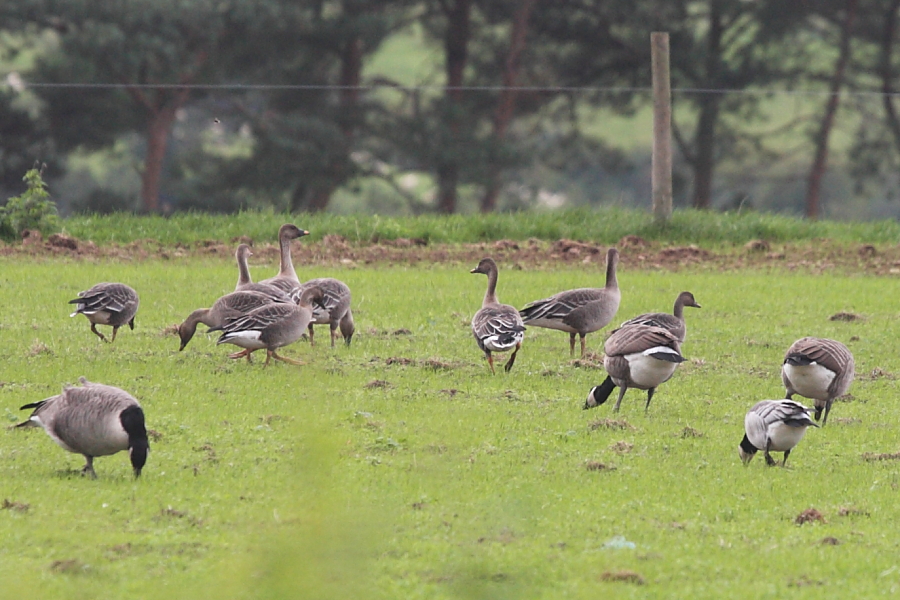Blagdon Lake Birds
Tundra Bean Goose Anser serrirostris [Gould, 1852]
Tundra Bean Goose A. s. rossicus [Buturlin, 1933]
(Extremely rare PM & WV)

- 1st-winter, 27th-28th Jan. 1996 (N.R. Milbourne, S. Preddy.).
- Thirteen (4 adults & 9 juveniles), 18th Oct. 2006 (A.H. Davis, R. Mielcarek.), & 20th Oct. 2006 (N.R. Milbourne, photographed).
A List of British Birds (BOU, 1915) states that the Bean Goose Anser fabalis is a winter visitor, more common on the west coast of Britain than on the east. It was also common in central Ireland many years ago (Yarrell, 1884-1885) but is no longer a common visitor to Britain with just two flocks of the southern Swedish Taiga Bean Goose A. f. fabalis population wintering in the Yare Valley, Norfolk and Central Scotland on a regular basis. On other occasions we get winter influxes of the Tundra Bean Goose A. f. rossicus which breed on the western tundra of Russia and usually winter in The Netherlands, Germany, France and central Europe. When they arrive in Britain, these birds are prone to wander around the country during winter. They generally start their migration back to the breeding grounds in February.

Bean Goose taxonomy has been subject to fairly regular revision in the last two decades and I have added some recent research findings under the closely related Pink-footed Goose heading. The British Ornithologist's Union (BOU) recognised two species, Bean and Pink-footed Goose. However, the International Ornithological Congress (IOC) recognises 3 species, Taiga Bean Goose Anser fabalis, Tundra Bean Goose Anser serrirostris and Pink-footed Goose Anser brachyrhynchus, and these were adopted by the BOU on 1st January 2018.
On the 27th January 1996, Nigel Milbourne noted a grey goose briefly at Green Lawn before it flew off. Although the bird was suspected to be a Bean Goose, it wasn't identified to species until it was found the next day at Chew Valley Lake with the Canada Goose Branta canadensis flock and identified as a Tundra Bean Goose A. serrirostris. The bird was seen again at Blagdon during lunchtime the following day, alone on Rugmoor Point, by the author and Steve Preddy before it flew off in the mist towards Chew Valley Lake once more. There is a picture of the bird taken by Rich Andrews at Chew Valley Lake in the Avon Bird Report of the year.
On the 18th October 2006, Andy Davis and Richard Mielcarek saw 13 Tundra Bean Geese at the lake but they flew off west shortly afterward. Two days later, on the 20th, the author found the same flock preening on the bank at Bell's Bush before they flew onto Holt Farm fields to feed. While attempting to get some photographs, the farm stockman came into the field to move the electric fence and flushed all the geese. Unfortunately, they flew off west once again and did not return.

Bibliography (sources of information):
- British Ornithologists' Union. 1915. A List of British Birds. (2nd & revised ed.). BOU.
- British Ornithologists' Union (BOU) website
- British Trust for Ornithology (BTO) website
- Davis, A.H. (ed.). Avon Bird Report, 1996. Avon Ornithological Group.
- Rose, Dr H.E. (ed.). Avon Bird Report, 2006. Avon Ornithological Group.
- Yarrell, W. 1884-1885. A History of British Birds. Volume IV. (4th ed. revised by H. Saunders). John Van Voorst, London.